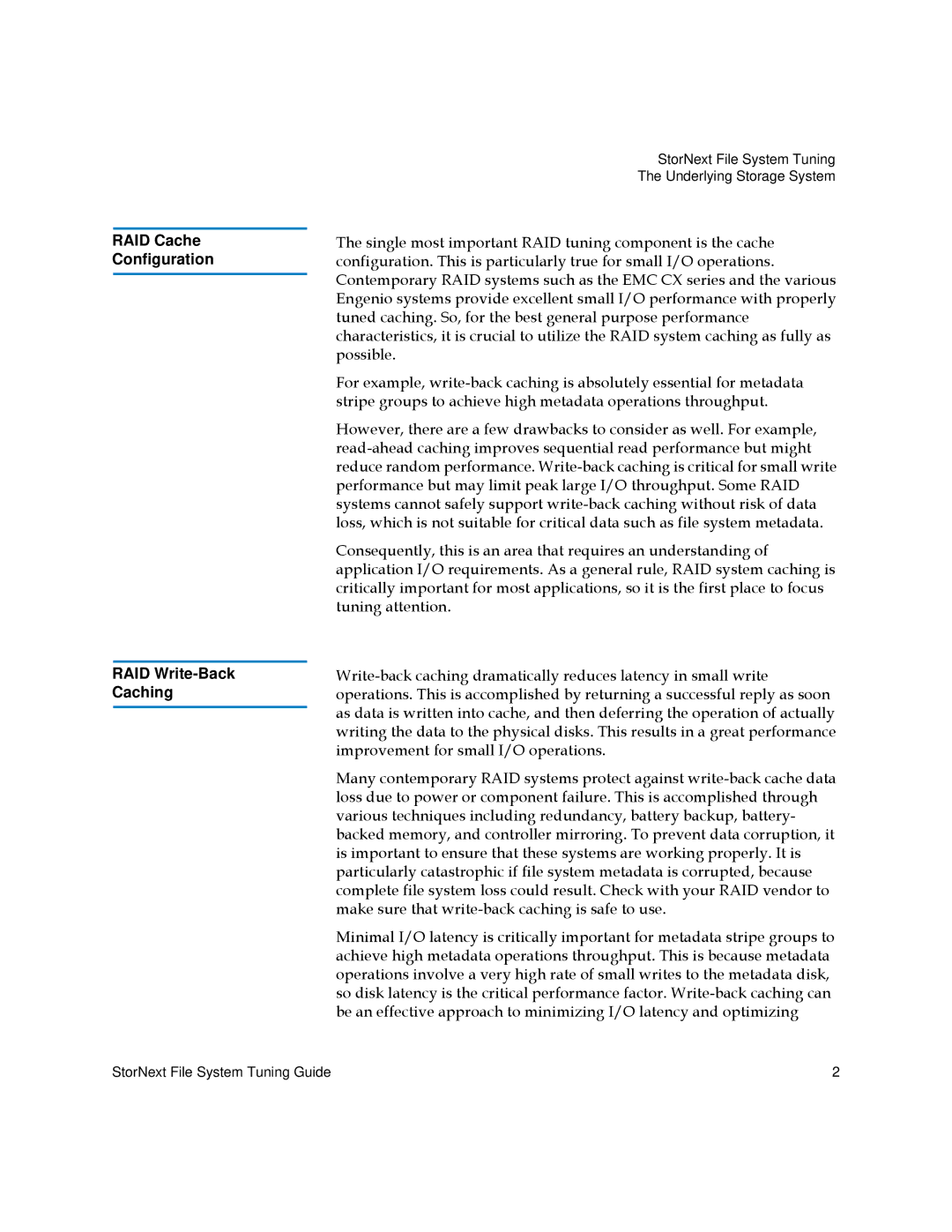StorNext File System Tuning
The Underlying Storage System
The single most important RAID tuning component is the cache configuration. This is particularly true for small I/O operations. Contemporary RAID systems such as the EMC CX series and the various Engenio systems provide excellent small I/O performance with properly tuned caching. So, for the best general purpose performance characteristics, it is crucial to utilize the RAID system caching as fully as possible.
For example, write-back caching is absolutely essential for metadata stripe groups to achieve high metadata operations throughput.
However, there are a few drawbacks to consider as well. For example, read-ahead caching improves sequential read performance but might reduce random performance. Write-back caching is critical for small write performance but may limit peak large I/O throughput. Some RAID systems cannot safely support write-back caching without risk of data loss, which is not suitable for critical data such as file system metadata.
Consequently, this is an area that requires an understanding of application I/O requirements. As a general rule, RAID system caching is critically important for most applications, so it is the first place to focus tuning attention.
Write-back caching dramatically reduces latency in small write operations. This is accomplished by returning a successful reply as soon as data is written into cache, and then deferring the operation of actually writing the data to the physical disks. This results in a great performance improvement for small I/O operations.
Many contemporary RAID systems protect against write-back cache data loss due to power or component failure. This is accomplished through various techniques including redundancy, battery backup, battery- backed memory, and controller mirroring. To prevent data corruption, it is important to ensure that these systems are working properly. It is particularly catastrophic if file system metadata is corrupted, because complete file system loss could result. Check with your RAID vendor to make sure that write-back caching is safe to use.
Minimal I/O latency is critically important for metadata stripe groups to achieve high metadata operations throughput. This is because metadata operations involve a very high rate of small writes to the metadata disk, so disk latency is the critical performance factor. Write-back caching can be an effective approach to minimizing I/O latency and optimizing

